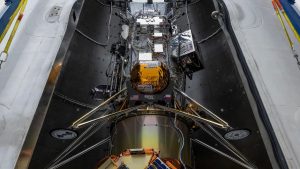Mice born with two fathers after scientific breakthrough – and it could pave way for same in humans
Scientists say they have bred mice using eggs originating from male cells, in a breakthrough which could one day pave the way for human male couples to have children.
Researchers claim they successfully created the eggs by turning male XY chromosome pairs from the skin cells of male mice into female XX chromosome pairs.
This was achieved by converting the skin cells into stem cells, deleting the Y chromosomes, copying the x chromosomes and then pairing the copies with the original X chromosomes.
This allows the stem cell to be programmed to become an egg. The egg was then fertilised with sperm from another mouse.
Researchers say the technique was used to create seven mice pups, which appeared healthy and had a normal lifespan.
And they believe the technique could one day be used to allow human male couples to have children together using an egg created from their own cells.
It could also be used to treat Turner syndrome – a genetic condition that affects only females and happens when one of the X chromosome is missing or partially missing.
But Professor Katsuhiko Hayashi from Osaka University, who carried out the research and presented it at the human gene-editing summit at the Crick Institute in London on Wednesday, said it could take years before his technique is used successfully in human cells.
Read more:
Scientists create ‘synthetic’ mouse embryos
Human cells grown in monkey embryos trigger ethical concerns
He also warned that it could be difficult to replicate with human cells, which require a longer period of cultivation to produce a mature egg.
Professor Mitinori Saitou, also speaking at the event, said the longer cultivation period raises the chances of abnormalities accumulating in the cells.
But Professor Hayashi said he was optimistic that the current problems could be overcome within ten years and that his team would now attempt to replicate the study with human cells.
Professor George Daley, of Harvard Medical School, who is not involved in the research, described it as “fascinating”.
But he said using the technique on human cells would be “harder than the mouse”.
The results of the study have now been submitted for publication in the scientific journal Nature.




